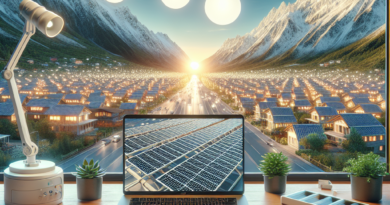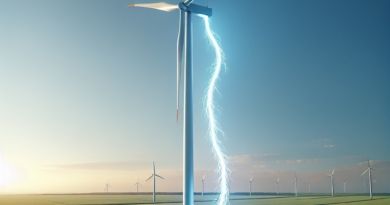Is Europe Making a Huge Mistake by Saying Goodbye to Photovoltaics Forever?
Solar Energy Paradox: Facing Overproduction
Talking about saying “goodbye” to photovoltaic energy might sound extreme, but it’s a deliberate provocation to shed light on what’s happening in Europe, with Italy not being significantly involved in this paradoxical situation.
The issue arises from the excessive push for the installation of solar panels, leading to an abundance of “green” electricity that has significantly decreased energy prices, at times even dropping below zero.
Despite seeming like good news, the overproduction of energy poses a significant problem.
It can eventually make solar panel installations much less profitable than believed.
While the government currently benefits from paying households generating surplus energy, there’s a risk of this scenario changing.
In the future, it might be the solar panel owner bearing the costs.
The Problem of Overproduction
As the number of photovoltaic installations increases, so does the risk of overproducing energy.
Due to various incentives granted over the years, renewable energy sources have grown rapidly, outpacing the infrastructure’s capacity to adapt.
This situation leads to overproduction, where energy supply exceeds demand, sometimes causing difficulties in distributing excess energy to neighboring areas due to grid limitations.
Overproduction mainly occurs during peak production hours, typically in the central hours of the day when energy output surpasses the actual demand, resulting in negative pricing – an unconventional incentive encouraging consumers to use more electricity.
The Error Across Europe
Many European countries have fallen into this trap.
Negative energy prices are becoming more frequent, particularly in Denmark, Spain, and Germany, with Italy also at risk, as recent events have shown.
For example, on April 7th, the price dropped to 10 cents per megawatt-hour during certain hours, marking the lowest price in four years.
While the abundance of electricity benefits consumers, it poses challenges for grid operators.
How long will this situation last? How sustainable are negative pricing periods? While efforts are made to optimize the power grid for better distribution, it’s unclear how quickly these issues can be addressed.
One potential solution is to enhance energy storage capabilities to utilize excess energy during low-production periods.
However, this demands significant investments in large-scale batteries and innovative energy storage systems like sand batteries, which could take time to develop.
It’s likely that incentives will diminish to restrict installations and curb this phenomenon, potentially leading to a scenario where energy producers have to pay for excess energy, as seen in countries like Australia.
Conclusion
Choosing to install a solar panel system requires careful consideration in the face of changing energy dynamics.
Prioritize investing in energy storage systems as incentives for excess energy decrease.
Additionally, shifting towards energy-efficient appliances, such as induction stoves replacing gas ones, can enhance self-sufficiency and reduce energy surplus.




